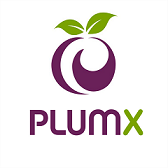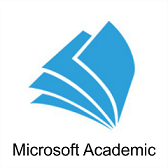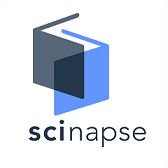Sub-Granting for Localisation: Aligning Donor Priorities with Local Leadership in Kenya-Lessons from the Centre for the Study of Adolescence
الملخص
This study examines the implementation of Locally Led Development (LLD) principles by the Centre for the Study of Adolescence (CSA) in Kenya, with a specific focus on sub-grant management practices and their implications for sustainability and operational efficiency within non-profit ecosystems. Using a qualitative research design, the case study draws on document reviews, key informant interviews, and focus group discussions with CSA staff and Sub-Implementing Partners (SIPs) and donors. Findings highlight the central role of resource diversification, particularly through community-led funding approaches, financial accountability, underpinned by real-time monitoring systems and finance, subaward and transparency fostering protocols, in ensuring effective and transparent grant management. Strategic capacity strengthening of SIPs, CSA’s emphasis on adaptive management demonstrated through proper understanding of the SIPs, facilitated through organisational capacity assessments, regular follow-ups, contingency planning, and flexible budgeting, were established as key enablers. Key challenges identified include the unpreparedness of SIPs for the complexity of compliance requirements, rigidity among some SIPs to change, heavy technical support needed by smaller SIPs, adverse effects of currency fluctuations on budget predictability, and significant administrative demands on both CSA and SIPs. The CSA experience offers lessons for organisations seeking to institutionalise LLD principles in development programming across similar contexts. To strengthen locally led sub-grant management, the study recommends a multi-pronged approach: investment in structured, needs-based capacity strengthening for SIPs; enhanced financial accountability through digital systems; institutionalisation of adaptive management practices that promote responsiveness; a graduated compliance framework; adoption of strategies to promote local resource mobilisation; increased donor flexibility and establishment of a learning agenda across the Sub-granting cycle. Further, support mechanisms to address organisational rigidity, improved budgeting and monitoring tools to track progress, and streamlined administrative processes to minimise operational burdens are imperative.
التنزيلات
المراجع
Abenet, K. (2019). An assessment of the grant management system and its contribution to the success of the project (MBA in General Management Degree). St. Mary's University.
Banks, N., Hulme, D., & Edwards, M. (2015). NGOs, states, and donors revisited: Still too close for comfort? World Development, 66, 707– 718. https://doi.org/10.1016/j.worlddev.2014.09.028
Barakat, S., & Milton, S. (2020). Localisation across the humanitarian–development–peace nexus. Journal of Peacebuilding & Development, 15(2), 147–163. https://doi.org/10.1177/1542316620922805
Barbelet, V. (2018). As local as possible, as international as necessary: Understanding capacity and complementarity in humanitarian action. Overseas Development Institute. https://odi.org/en/publications/as-local-as-possible-as-international-as-necessary-understanding-capacity-and-complementarity-in-humanitarian-action/
Belay, H., Kebede, M., Hassen, S., Yitbarek, K., Ayalew, M., & Gebremariam, E. (2022). Capacity-building and mentorship program for strengthening routine health information system in Amhara region, Ethiopia: Evaluation of a pilot program. Ethiopian Journal of Health Development, 36(3), 00–00. https://pmc.ncbi.nlm.nih.gov/articles/PMC9476479/
Booth, D., & Unsworth, S. (2014). Politically smart, locally led development. Overseas Development Institute. https://odi.org
Bond. (2019). Funding for effectiveness: A smarter approach to risk in the humanitarian sector. https://www.bond.org.uk
Bowman, W. (2019). Financial capacity and sustainability of ordinary nonprofits. Nonprofit Management and Leadership, 22(1), 37–51.
Braun, V., & Clarke, V. (2006). Using thematic analysis in psychology. Qualitative Research in Psychology, 3(2), 77–101. https://doi.org/10.1191/1478088706qp063oa
CSA. (2018). 30 years of advancing adolescent sexual and reproductive health and rights in Kenya. Nairobi: Centre for the Study of Adolescence.
CSA. (2022). Youth 4 Health project final evaluation report. Nairobi: Centre for the Study of Adolescence.
CIVICUS. (2021). Civil society resourcing: How funders can build equitable partnerships. https://www.civicus.org
Dadu, T. Z., Njeri, I., & Kemunto, A. (2024). Grant management practices and financial sustainability among non-governmental organizations in Taita-Taveta County: A Case of World Vision Kenya International.
Dercon, S., & Lea, N. (2020). Risks, results and aid: How development cooperation can do better. Centre for Global Development. https://www.cgdev.org
ENI CBC MED Programme. (2014–2020). Handbook for sub-grants management: Lessons learned from the implementation of cross- border cooperation. https://www.enicbcmed.eu
Featherstone, A., & Mowjee, T. (2020). Flexible funding: A collective responsibility. UNICEF and Development Initiatives. https://devinit.org
Frennesson, L., Kembro, J., de Vries, H., Van Wassenhove, L., & Jahre, M. (2021). Localisation of logistics preparedness in international humanitarian organisations. Journal of Humanitarian Logistics and Supply Chain Management, 11(1), 81–106.
Global Affairs Canada. (2022). SHE SOARS mid-term evaluation report: Advancing adolescent SRHR in Kenya, Uganda, and Zambia. Ottawa: Government of Canada.
Gulrajani, N. (2017). Bilateral donors and the age of the national interest: What prospects for challenge by development agencies? World Development, 96, 375– 389. https://doi.org/10.1016/j.worlddev.2017.03.021
Guijt, I. (2014). Participatory approaches: Methodological brief. UNICEF Office of Research–Innocenti. https://www.unicef-irc.org/publications/
Hodgson, J., & Pond, A. (2018). How community philanthropy shifts power: What donors can do to help make that happen. Global Fund for Community Foundations. https://globalfundcommunityfoundations.org
Ingram, G. (2022). Locally driven development: Overcoming the obstacles. Brookings Global Working Paper (173). https://www.brookings.edu/articles/locally-driven-development-overcoming-the-obstacles
James, R. (2016). Capacity building for NGOs: Making it work. INTRAC.
Kenyan NGO Coordination Board. (2021). Financial governance guidelines for NGOs in Kenya. Nairobi: Government of Kenya.
Leonard Cheshire. (2020). Disability data and inclusive development. https://www.leonardcheshire.org
Lincoln, Y. S., & Guba, E. G. (1985). Naturalistic inquiry. Sage.
Masolo, A., & Sang, P. (2024). Grant management strategies and project performance of non-governmental organizations in Nairobi City County, Kenya. Kenyatta University Repository. https://ir-library.ku.ac.ke/items/154773dc-2f9a-4bf5-8d14-25f131e6cd50
Michigan Nonprofit Association. (2017, October 17). Cash flow in the nonprofit business model: A question of "what's" and "whens." https://www.mnaonline.org/about/newsroom/2017/10/17/cash-flow-in-the-nonprofit-business-model-a-question-of-whats-and-whens
Mkutano, S. M., & Sang, P. (2018). Project management practices and performance of non-governmental organizations' projects in Nairobi City County, Kenya. International Academic Journal of Information Sciences and Project Management, 3(3), 1–22.
Nonprofit Finance Fund (NFF). (2022). 2022 State of the Nonprofit Sector Survey. https://nff.org/learn/survey
Nyaguthii, E. (2019). Evaluation capacity building and improvement of monitoring and evaluation practice among non-governmental organizations in central-eastern counties of Kenya. International Academic Journal of Human Resource and Business Administration, 3(6), 487– 500. https://www.researchgate.net/publication/332225091
OECD. (2019). Development co-operation principles for results-based management. Paris: OECD.
OECD. (2020). Development co-operation report 2020: Learning from crises, building resilience. OECD Publishing. https://doi.org/10.1787/f6d42aa5-en
OECD. (2021a). Designing development support for local actors: What donors can do to improve the effectiveness, efficiency, and sustainability of aid. https://www.oecd.org/development/designing-development-support-for-local-actors-4c2c3988-en.htm
OECD. (2021b). Applying the OECD principles on the governance of infrastructure. OECD Publishing. https://doi.org/10.1787/8e3a1e9f-en
OECD. (2022). Supporting locally led development: Challenges and pathways. https://www.oecd.org
Overseas Development Institute (ODI). (2021, March 4). Localisation is here to stay: Lessons from Kenya. https://odi.org/en/insights/localisation-is-here-to-stay-lessons-from-kenya
Oxfam. (2020). Unpacking localization: A South Asia perspective. https://oxfamilibrary.openrepository.com
Pathfinder International & CSA. (2019). Scaling up youth-friendly services in Kenya: Lessons from implementation. Nairobi: Pathfinder International and Centre for the Study of Adolescence.
Pritchett, L., Samji, S., & Hammer, J. (2013). It’s all about MeE: Using structured experiential learning (“e”) to crawl the design space. CGD Working Paper No. 322. https://www.cgdev.org
Roepstorff, K. (2020). A call for critical reflection on the localisation agenda in humanitarian action. Third World Quarterly, 41(2), 284–301. https://doi.org/10.1080/01436597.2019.1644160
Rosnerova, Z., & Hraskova, D. (2020). Management of non-profit organizations. 51st International Scientific Conference on Economic and Social Development – Rabat, 26-27.
Rutgers, & CSA. (2021). RHRN II program baseline report – Kenya. Nairobi: Rutgers and Centre for the Study of Adolescence.
Shava, E. (2020). Financial sustainability of NGOs in rural development programmes in Zimbabwe. Development in Practice, 30(8), 1027– 1038. https://doi.org/10.1080/09614524.2020.1853059
Sridhar, D., & Woods, N. (2020). Trust, accountability, and the future of global health governance. Global Policy, 11(2), 229–240. https://doi.org/10.1111/1758-5899.12797
Start Network. (2021). Crisis anticipation and funding flexibility. https://startnetwork.org
UNICEF. (2020). Working with civil society in fragile contexts: A partnership framework. https://www.unicef.org
USAID. (2018). Grants and Cooperative Agreement ADS 303.3.24.1. Washington, DC: USAID.
USAID. (2020). Financial management and accountability for sub-awardees: Guidance for partners. Washington, DC: USAID.
USAID. (2022a). Localization progress report 2022. https://www.usaid.gov/sites/default/files/documents/Localization_Progress_Report_2022.pdf
USAID. (2022b). Local capacity strengthening policy. https://www.usaid.gov
Van Brabant, K., & Patel, S. (2018). The case for systems change in humanitarian practice. Global Mentoring Initiative. https://www.gmentor.org
Van Brabant, K., & Patel, S. (2018). Localisation in practice: Emerging indicators and practical recommendations. Disaster and Emergencies Preparedness Programme. https://reliefweb.int/sites/reliefweb.int/files/resources/Localisation-In-Practice-Full-Report-v4.pdf
Wagner, L. (2020). The impact of an organisational capacity assessment on non-profit organisations in South Africa. University of the Western Cape Institutional Repository. https://uwcscholar.uwc.ac.za/items/2fb2ddaf-511f-458d-aeec-da5ddd885389
Wanjiru, R., & Kilonzo, N. (2017). Civil society organizations and the policy process in Kenya: The case of SRHR. African Journal of Reproductive Health, 21(2), 83–92. https://doi.org/10.29063/ajrh2017/v21i2.9
Watson, C. (2019). Improving the effectiveness of donor funding for women’s empowerment and gender equality. Overseas Development Institute (ODI). https://odi.org/en/publications/improving-the-effectiveness-of-d
الحقوق الفكرية (c) 2025 Christine Wambui Njuguna, PhD, Ndayala Phoebe Didi, PhD, Humphres Evelia

هذا العمل مرخص حسب الرخصة Creative Commons Attribution 4.0 International License.




























